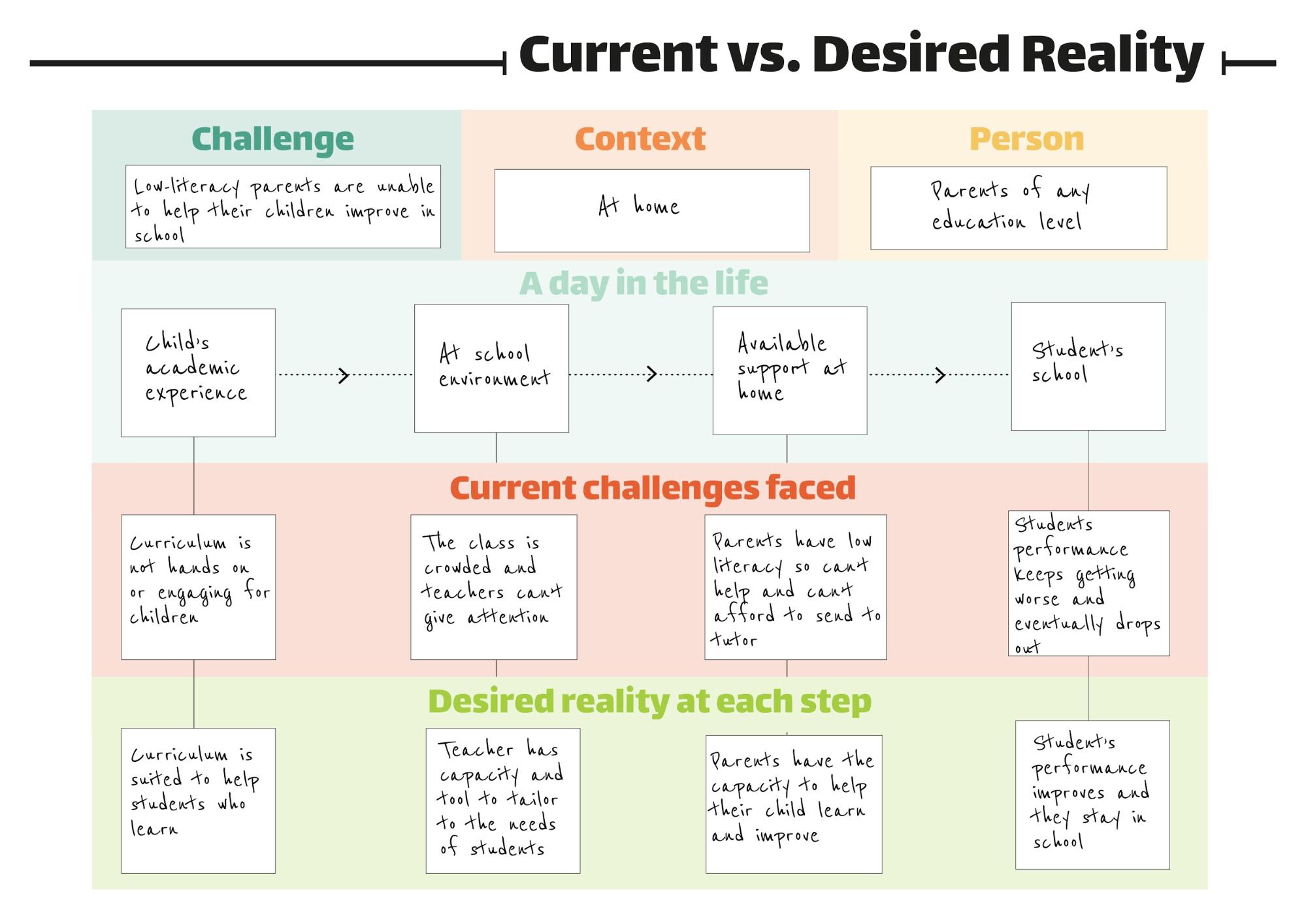Look & Think
Current reality vs. desired reality
This is an inclusive way to frame a community challenge and explore how different stakeholders experience the same problem.
In Jordan, 30% of children fail math and around the third grade, they face the risk of repeating grades for the first time. Low-income families cannot afford tutoring or supplemental services to help children falling behind in class and if their guardians don’t have a high level of education to support them individually, children risk failing and eventually dropping out of school.
Abdullah, Asma’a, Nebras, and Mohammad wanted to explore the role of parents and teachers and test who would be the most effective user in solving this problem. This tool helped them map out the current day-to-day journey of low-income students and what a desired reality might look like for them. Initially, they focused on a solution that would build the capacity of teachers, but through this activity, they realized that teachers are already overworked. They shifted their intended user to parents with low-literacy and numeracy, developing a low-cost curriculum supplement that empowers them to teach their children key skills through modeling activities that can be done in their home.

- In the first row, identify the person[link to persona] you want to design a solution for, the context, and the main challenge they face.
- In the second row, outline the stages of a typical day the person listed in the yellow box faces.
- Follow the arrows from each step vertically and describe their current reality in the third row and desired reality in the fourth row.
- Repeat the process with different stakeholders and contexts. Once you complete this activity, you should end with a defined challenge statement[link to HMW tool on site].
If you need help generating content to plug into the empty boxes, try using design research plan and the design research debrief.
Understanding their current and desired reality, we used to keep asking ourselves questions at every step. Everytime we did this, more questions and solutions emerged that we were not expecting, yet they led us to unique opportunity spaces. For example, we started hearing parents state their desire to spend time with their child after school, to do something together and learn at the same time. At the time, we were focusing on teachers as our intended user, yet hearing that desire from parents made us realize that parents, unlike teachers, had the time and willingness to facilitate our solution.
—Nebras
Related Tools
Design Research Debrief
Reflect on and summarize your thoughts after conducting observational research or an interview.
Design Research Plan
A design research planning tool with space for up to ten different techniques to acquire different pieces of information. Researching each point requires teams to think and answer questions such as, what will they ask, how will they document their findings, and who will be doing what?
How Might We Question Template
A template that helps you frame your design challenge into and actionable problem statement that will drive the rest of your problem solving work.
Persona
This template helps you come up with fictitious characters that represent the different user types within your targeted group of users. It helps to focus on the need, goals, and behaviors of a real user group based on your research. It's a useful tool to help you better understand who you are designing for.
Point of View template
Create an actionable problem statement to generate ideas. This tool can be useful in a challenge statement.
